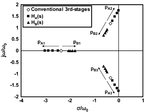henrytqy
Newbie level 6
- Joined
- Nov 9, 2011
- Messages
- 14
- Helped
- 0
- Reputation
- 0
- Reaction score
- 0
- Trophy points
- 1,281
- Location
- ShangHai,China
- Activity points
- 1,374
Hi, guys
I'am very confused with the concept of peaking and overshoot.
Dose they descripe the same thing just in the different domain?
If not, is there any relationship between them?
Thanks a lot~~~
I'am very confused with the concept of peaking and overshoot.
Dose they descripe the same thing just in the different domain?
If not, is there any relationship between them?
Thanks a lot~~~

